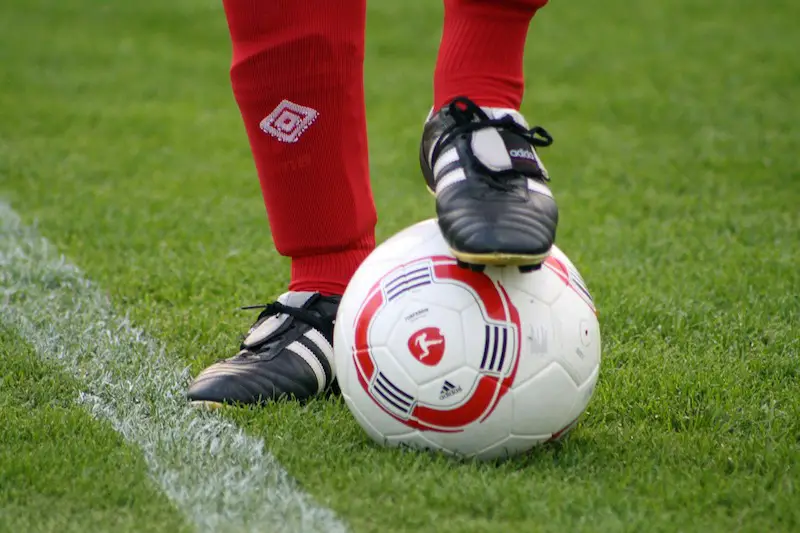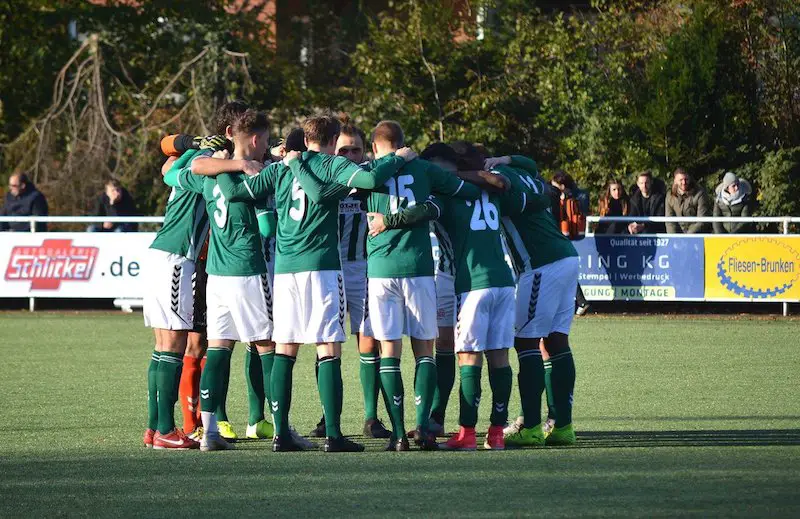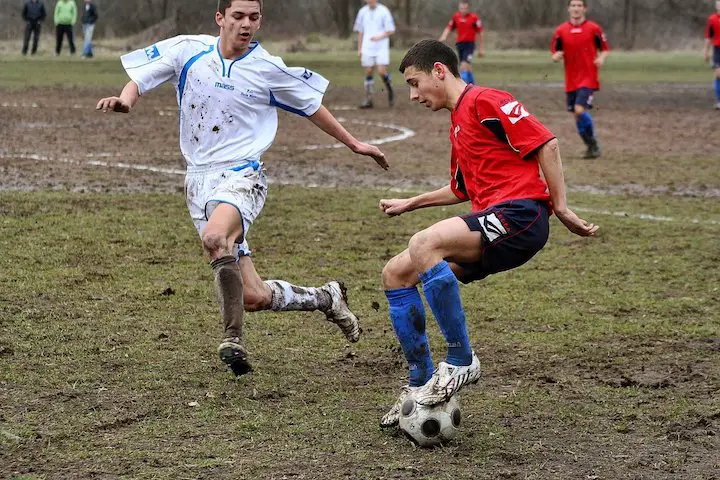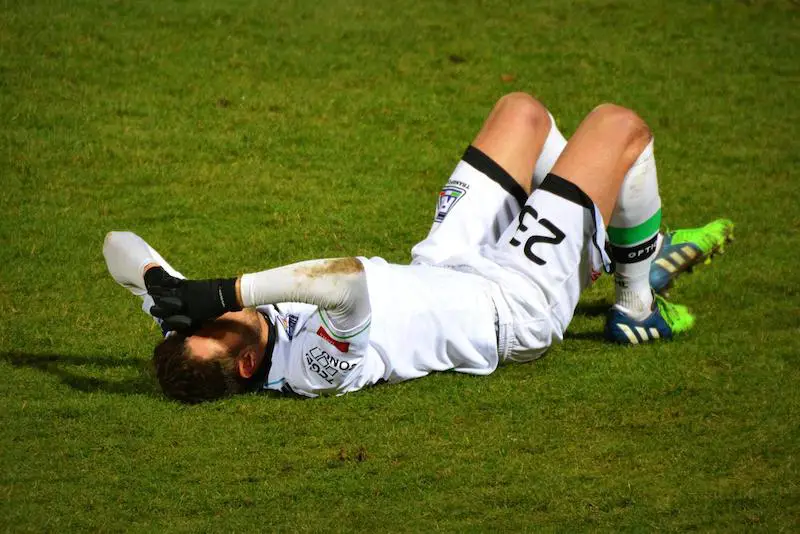Your Guide
 Alex Waite
Alex Waite
- Soccer Cleats Should Be a Tight Fit but Have a Small Space in the Toe.
- Different Players Have Different Needs for Their Cleats Based on Playing Time, Conditions and Playing Surfaces.
- Preparation, Trying On Cleats and Breaking Them in Is Essential.
Soccer cleats should not fit tightly around your foot and some space is required between the end of your toes and the cleats.
Ultimately, you want the cleats to be a SLIGHTLY EXTENSION to your foot size for comfort and some room to maneuver.

There is no substitute for a well-fitting pair of soccer cleats as problems will occur if players get the wrong size.
I have experienced poorly fitting cleats in the past from hand-me-down pairs and honestly, it becomes PAINFUL IF YOU PERSIST.
When I saved up and eventually brought my pair of cleats, I was SO EXCITED to try them out that I came back with bloodied feet and was sidelined with injury for two weeks because I got the size wrong.
On the other hand, when I played soccer at university, I rushed to get a pair of cleats from the local sports shop, opting for a couple of sizes bigger as that was all the shop had.
Needless to say, my performance suffered as a result and felt like I was playing on an ice rink.
A lot of younger players I have coached also head into the game unaware of the potential injuries that come with ill-fitting cleats, such as blisters and friction burn.
In a recent season, one of my players was out of action for a month as they continued to wear poorly fitting cleats.
To help find the best cleats for you, we have compiled a useful step-by-step guide to follow when purchasing cleats.
How Should My Soccer Cleats Fit?
As a general guide:
- You should be able to press your thumb on the toe of the cleats and feel half of the space.
- If you can only feel your toe and nothing else, the cleats are too tight.
- If you cannot feel your toe at all, they are too loose.
In an ideal world, soccer players would be able to go into a sports shop or head online, select their preferred cleats in their shoe size and start playing.
However, soccer cleat manufacturers update and change their styles and fits so much that no two boots are the same.
By the time you come to upgrade your cleats, they may be a completely different fit from YOUR PREVIOUS PAIR.
Research conducted by podiatrist Emma Cowley outlines all the factors that can play a part in ill-fitting cleats and the knock-on effect they can have on player injuries.
Her research outlines the fine details of getting soccer cleat fittings correct as movements in soccer are so reliant on the foot as a base.
Whether you are a new soccer player or experienced and looking for an upgrade, we have outlined some questions to ask yourself below when trying to find well-fitting cleats.
How Can I prepare for My New Soccer Cleats?
Spending a bit of time researching your soccer needs and requirements for soccer cleats can save time, money and help you perform better on the pitch.
When I have rushed into purchases in the past, by choosing a cheap, ill-fitting pair to fill the void after my old cleats have broken, it has NEVER ENDED WELL.
The immediate knock-on effects were missed training sessions and matches while my feet recovered from blisters and burns.
However, long-term injuries mean I now have one permanently swollen little toe on my right foot from continuous friction and wear and tear, which occasionally becomes painful.
The steps below can help to PREVENT INJURIES like mine and they make for a smoother playing experience.
My failures were the result of being young, inexperienced and simply wanting to get on the pitch and play, completely unaware of the damage I caused to my feet.
A short amount of prep time would have led to more playing time.
1. Know Your Shoe Size First
Any footwear shop will help you to measure your feet to find your correct shoe size.
Alternatively, you can measure your feet and use an online guide to find out.
From here, you may want to get a half-size bigger soccer cleats so you have the additional wiggle room in the toe area.
2. Playing Conditions
If you are playing in hot and dry conditions, a more breathable, lightweight fitting cleat will help.
Alternatively, wet and cold playing conditions may need more heavy-duty cleats made from natural leather.
Also, think about how different layers may affect the fit.
When I played in the winter months in the UK, I would sometimes wear two pairs of thick socks and an ankle brace so I would get one size up from my natural shoe size.
3. What Are Your Playing Needs?
Are you playing soccer outdoors multiple times a week on a grass surface?
Or do you play the occasional small-sided match on artificial surfaces?
One of the joys of soccer comes from the multiple gameplay formats available.
Knowing your needs will help you prepare for the cleats you need, For example, a player who plays once a week on artificial grass may need more snug-fitting cleats with multiple, smaller studs.
Alternatively, a player who plays on grass multiple times a week may need soft ground cleats that allow some space for the toe.
When Should I First Try On My Cleats?
Once you have done your preparation and found the cleats you want, it is time to get them and TRY THEM ON.
But, never get your cleats out of the box and head straight on to the pitch as you could be heading back to the changing room in minutes.
I have seen countless players of all ages, including myself, showing off their brand new cleats, ready to get on the pitch and take them for a spin, only to be limping by the end of the training session or match.
In many cases, players literally cannot jog after ten to 15 minutes of wearing badly fitting cleats.
Often, players don’t have time to break in their cleats as they fit in soccer between work, family, school etc.
However, just taking your new cleats out of the box and trying them on with a pair of soccer socks in your home will guide you how your cleats fit.
If the toe feels cramped in any way, or your heel is rubbing and feels sore, the cleats are too tight.
Is Breaking In Important?
There is no substitute for breaking in a pair of cleats.
Even if you have found a pair of cleats you absolutely worship and they feel like they fit perfectly once they have arrived, you are likely to still encounter injuries or problems WITHOUT BREAKING THEM IN.
Taking things slowly and easing in your new boots is the ideal preparation to get them to match-ready.
Rather than getting straight onto the pitch and going the whole 90 minutes in your new cleats, give them a 5-10 minute burst first.
This could be some passes, sprints, jogs, and jumps to get your new cleats used to the movement of your feet.
Furthermore, you get a feel for how your new cleats react on your feet and you can decide if they are the right fit for you and your playing needs.


